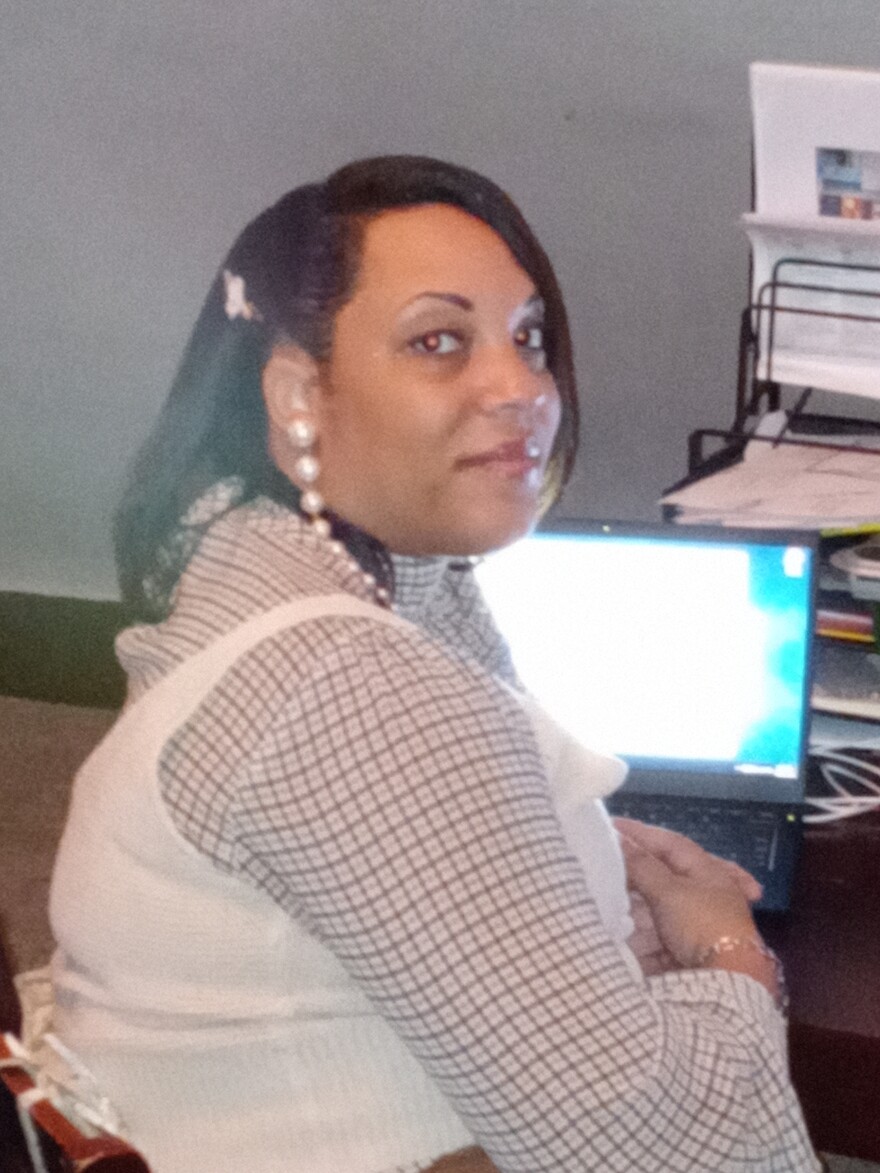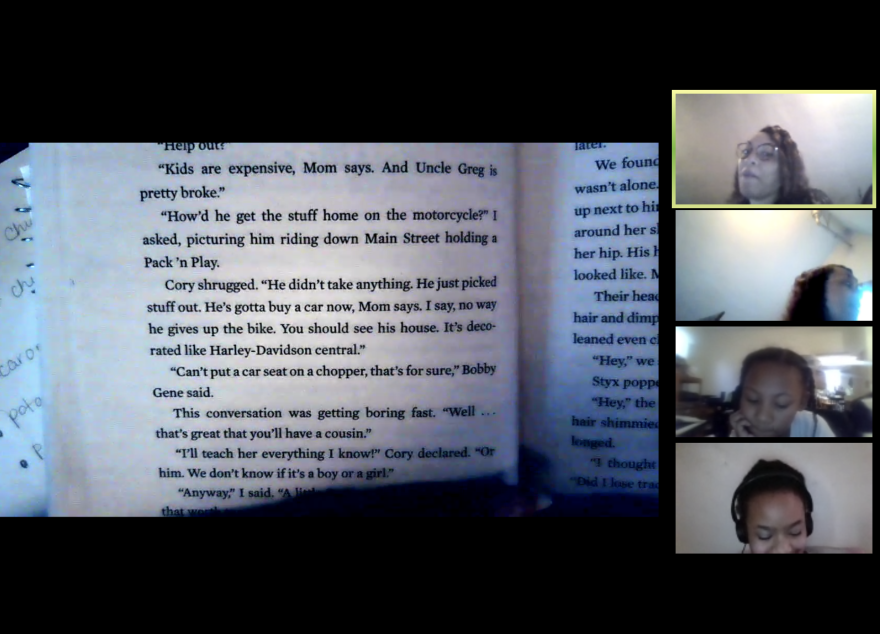The COVID-19 pandemic has pushed many teachers and students out of their classrooms, and onto their computers. But K-12 education wasn’t built to be virtual. So how have teachers adapted their in-person instruction for the computer screen? WUWM's Emily Files visited virtual classrooms to find out, and will tell those stories this month. In this first installment, we learn how a Milwaukee fourth grade English teacher breaks up a 90-minute class to keep kids engaged.
>>Listen To The Entire Virtual Classroom Series
It’s 9 a.m. the Tuesday before Thanksgiving. TinaMarie Tate, who teaches at Stellar Elementary, greets about 25 students as they pop up in her Zoom online classroom.
“Were you here yesterday Natalia? I missed you,” Tate says to one student.
Once most of the fourth graders are there, Tate does a holiday-themed icebreaker, asking students to choose between two Thanksgiving dishes: turkey or chicken, potato salad or pasta salad, pumpkin pie or sweet potato pie.
The students furiously type their answers into the Zoom chat box, and Tate reads them out loud. She agrees with one student who chooses dressing over macaroni and cheese: “Yes Daniela, alright Daniela,” Tate says. “You’re my friend.”

Tate does icebreakers like this for two reasons – first, to build relationships with students. It’s more challenging over a screen, and Tate’s school, which is part of the Carmen Schools of Science and Technology charter network, has been virtual this entire school year.
Tate says, the other reason for icebreakers is that it’s difficult for students to stay engaged if she spends the entire Zoom class on academics.
“I realized really early on that getting through a full lesson according to the pacing guide was not going to work,” Tate explains. “So I had to figure out OK, what is something I really want to do that is manageable, that I can give them a power lesson in a short amount of time, where they can still be successful and excited about learning?”
Tate had to temper her expectations for the amount of material she could get through in a virtual class. Now, for example, she’ll read out loud with the students one chapter from their book, instead of two.
After this morning’s icebreaker, Tate leads a short grammar exercise, gives students a five-minute break, and then they get into their reading lesson.
“What is our reading focus for today? Today we’re going to watch as Styx hurts Caleb’s feelings when he calls him 'brother,'” Tate says. “And so I want you to think about that. If Styx called Caleb his brother, I would assume he would be super duper happy about that. But in this case, it’s actually going to hurt his feelings.”
The fourth grade is reading a book called The Seasons of Styx Malone. In the chapter they’re reading, the main character, Caleb, realizes that Styx, a boy he looks up to, is untrustworthy.
Tate takes turns reading out loud with the students. She pauses often to gauge the students’ understanding of the story.
“This is a big shift in our story, because before then, Caleb would never think anything negative about Styx,” Tate says.
The students seem to be paying attention and invested in the characters. After they’re done reading, Tate pulls up a quiz with comprehension questions. She uses a tool called Quizzle, which turns the quizzes into competitive games, showing which students get the most questions right.
LISTEN: Virtual Classroom Series: Teaching Kindergarteners To Read Over A Computer Screen
In an interview after the class, Tate says some students don’t participate in the quizzes, and there’s not much she can do about it.
“It really takes like, I feel like the amount of attention you put into online schooling — it’s double that, because in the classroom, we’re all on the same thing together, so you don’t have the option to just sit there,” Tate says. “Whereas on the computer, I can’t control the home environment. So that’s the hardest part.”
In the virtual environment, the quieter students, the students who might be struggling — they’re harder to reach.
But there are small victories. Tate gave an example of a recent lesson that worked really well to engage students. She asked them to write from the perspective of turkeys.
“And write a letter to people convincing them not to eat them for Thanksgiving,” Tate says. “We spent 15 minutes letting them share their letters. And afterwards they were so excited, we had to mute them.”
That’s one benefit of the online classroom — the mute button.
Have a question about education you'd like WUWM's Emily Files to dig into? Submit it below.
_






